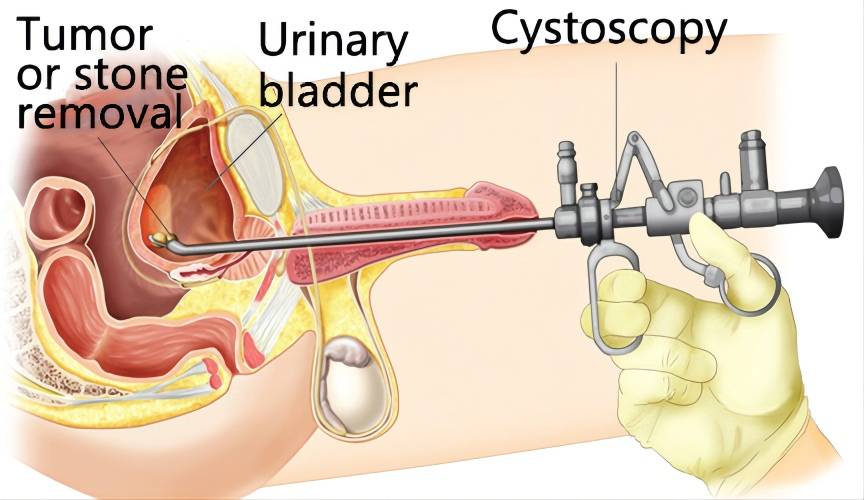- Shanghai, China
- [email protected]
- +86-21-58189111
Cystoscope, a type of endoscope, is similar in shape to a urethral probe, consisting of an electron microscope sheath, an inspection scope, a disposal and ureteral intubation scope, and a scope core, with an electrocautery, scissors and Accessories such as biopsy forceps. In recent years, the lighting system of the cystoscope has been changed. It is equipped with a cold light source box. The reversed strong cold light is transmitted to the inside of the bladder through the optical fiber guide light beam, replacing the bulb lighting at the front end of the cystoscope sheath. It has good lighting and a clear scene. Dimming at will and other advantages.

basic structure
Cystoscope is a kind of optical endoscope with a complex structure. There are many types and different structures, but the main components are the scope sheath, endoscope, intubation scope, obturator, accessories and other structures.
mirror sheath
Its function is to enable the speculum to be introduced smoothly, to flush the bladder and to supply the lighting source. The basic structure of the concave cystoscope and its name are three parts: front end, mirror rod and rear end. The front end is very short, about 1.5 cm long, at an angle to the mirror rod, and there are two types: concave and convex; the front end is the device part of the light source (while the McCarthy cystoscope does not have a light source), the light source bulb voltage is fixed, generally 2.5 volts, 3V and 4.5V. The modern new type of cold light source fiber cystoscope uses a tungsten monobromide lamp as the light source, and is connected to the cystoscope by a light guide fiber, and then the light guide beam fixed inside the lens rod guides the light to the small window at the front end of the lens sheath. inside shot. Therefore, there is no bulb device at the front end of the mirror sheath, but the luminosity is soft and extremely bright. This new type of fiberoptic cystoscope is also called cold light source cystoscope because there is no bulb light source at the front end and no heat is generated.
A small tungsten filament bulb is installed in a small hollow window at the front end of an ordinary cystoscope. At the front end of the concave or convex mirror sheath, there is an ellipse and a small window equipped with sealing glass. The light of the bulb light source or the cold light source is emitted from the small window, which is the illumination part of the field of view. The top is a small metal screw cap that can be removed or tightened for replacement or inspection of the bulb. One end of the tungsten wire inside the bulb is attached to the metal tube wall behind the bulb; the metal small tube is insulated from the surroundings, but connected with an insulated wire; the insulated wire is along the mirror rod and a pole at the rear Connected; the other end of the tungsten wire is in contact with the top metal cap, and is connected to the other pole of the rear end by the mirror sheath itself.
Leave a Comments